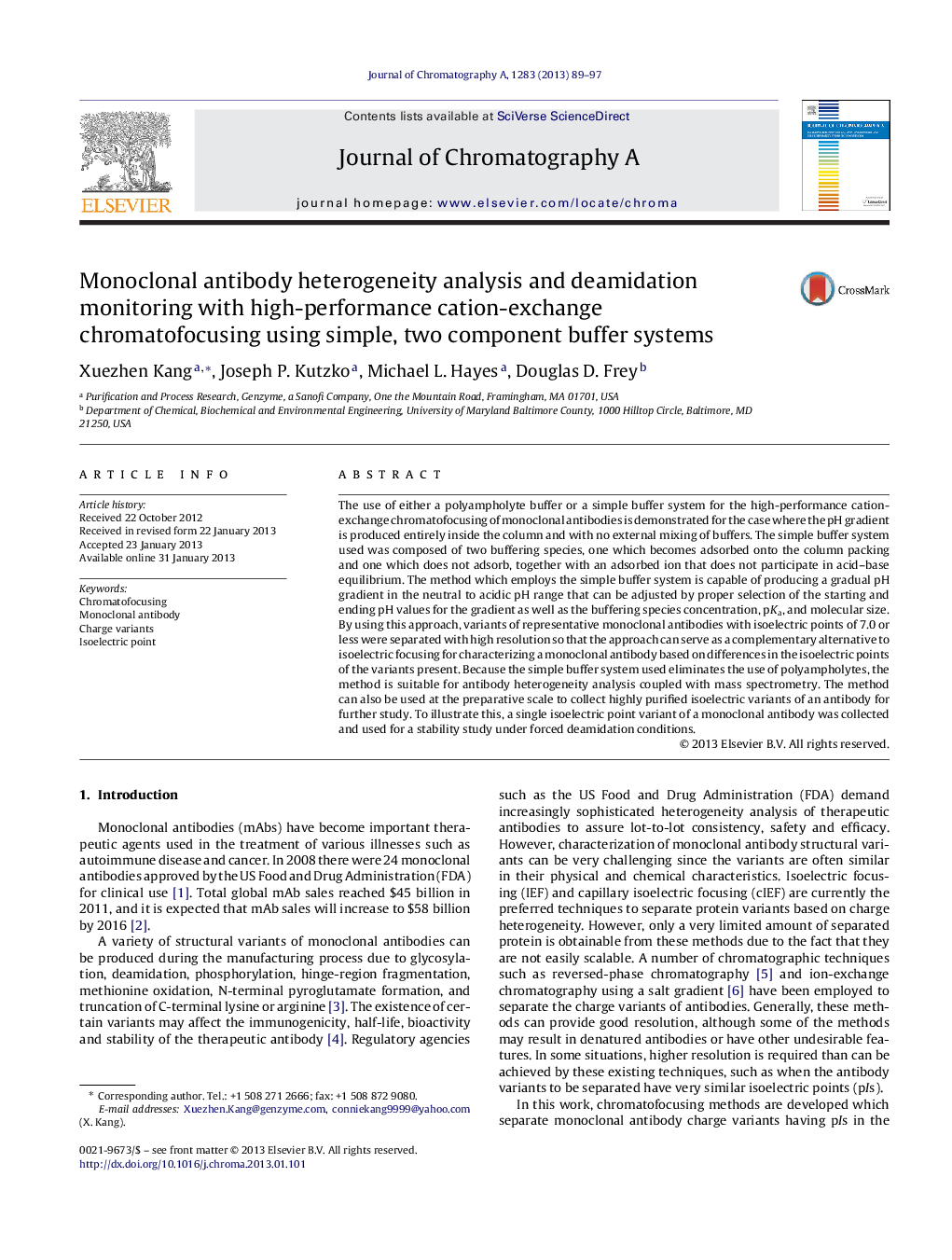| Article ID | Journal | Published Year | Pages | File Type |
|---|---|---|---|---|
| 1201086 | Journal of Chromatography A | 2013 | 9 Pages |
The use of either a polyampholyte buffer or a simple buffer system for the high-performance cation-exchange chromatofocusing of monoclonal antibodies is demonstrated for the case where the pH gradient is produced entirely inside the column and with no external mixing of buffers. The simple buffer system used was composed of two buffering species, one which becomes adsorbed onto the column packing and one which does not adsorb, together with an adsorbed ion that does not participate in acid–base equilibrium. The method which employs the simple buffer system is capable of producing a gradual pH gradient in the neutral to acidic pH range that can be adjusted by proper selection of the starting and ending pH values for the gradient as well as the buffering species concentration, pKa, and molecular size. By using this approach, variants of representative monoclonal antibodies with isoelectric points of 7.0 or less were separated with high resolution so that the approach can serve as a complementary alternative to isoelectric focusing for characterizing a monoclonal antibody based on differences in the isoelectric points of the variants present. Because the simple buffer system used eliminates the use of polyampholytes, the method is suitable for antibody heterogeneity analysis coupled with mass spectrometry. The method can also be used at the preparative scale to collect highly purified isoelectric variants of an antibody for further study. To illustrate this, a single isoelectric point variant of a monoclonal antibody was collected and used for a stability study under forced deamidation conditions.
► Developed a buffer system composed of only two buffering species for chromatofocusing. ► The pH gradient is produced entirely inside the column without external mixing. ► Numerical simulations to illustrate the parameters that govern the pH gradient shapes. ► Baseline separation of antibody charge variants using cation-exchange chromatofocusing. ► The method can be used at both analytical and preparative scales.
